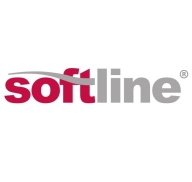

Adobe Commerce and Softline eCommerce Solution compete in the eCommerce platform market, each offering unique capabilities. Softline eCommerce Solution appears to have an upper hand due to its advanced features, aligning well with modern eCommerce needs.
Features: Adobe Commerce offers scalability, extensive integration options, and advanced analytics. Softline eCommerce Solution is recognized for personalized customer experiences, comprehensive inventory management, and its innovative feature set that resonates with modern business requirements.
Room for Improvement: Adobe Commerce could enhance its range of personalization tools, improve localized support for growing international demand, and expand its cost-effective options for small-scale enterprises. Softline eCommerce Solution might consider improving its marketing automation features, increasing its integration capabilities with third-party systems, and enhancing customer data analysis functions.
Ease of Deployment and Customer Service: Adobe Commerce provides seamless deployment with extensive customer support, which boosts operational efficiency. Softline eCommerce Solution features a straightforward deployment model but heavily relies on self-service options, with users appreciating its simplicity in the setup process.
Pricing and ROI: Adobe Commerce entails a higher setup cost with substantial ongoing expenses, yet it delivers considerable ROI due to its powerful features. Softline eCommerce Solution offers competitive pricing and quick ROI due to its cost-effective solutions and swift deployment, appealing to budget-conscious businesses seeking faster returns.

Adobe Commerce offers IT teams a versatile solution to effortlessly launch personalized commerce experiences while ensuring security and speed, all without starting from scratch. It provides a solid foundation of commerce functionality that allows businesses to swiftly enter the market with confidence. With pre-configured composable services, businesses can easily deploy and integrate these services to enhance their commerce foundation. The platform also supports the creation and integration of secure and scalable applications that extend native capabilities and seamlessly integrate with third-party solutions in a serverless PCI-compliant environment. Thanks to App Builder tools, customization becomes more accessible, reducing the overall cost of ownership.
For commerce teams, Adobe Commerce provides a dynamic platform that adapts as customer needs evolve. It enables omnichannel personalization through commerce data, delivering personalized content, promotions, recommendations, and site search through advanced AI and machine learning. This translates to an increased reach to new markets, brands, or business models. The platform empowers users with business-specific, user-friendly tools infused with AI capabilities, thereby enhancing marketing and merchandising efforts. Moreover, businesses can expand their commerce capabilities further by choosing from a vast array of free and premium apps and extensions available in the Commerce Marketplace, covering everything from back-office integrations to customer experience solutions, making it a comprehensive and flexible commerce solution.
Softline Ecommerce is a part of Softline Group, a leading global IT company.
Our All-in-One Ecommerce Solution for Digital Sales helps businesses to increase their revenue in online sales in Europe, Asia and Latin America.
We take care of payment processing in local currency & invoicing, tax management & compliance, protect transactions with AI-based fraud systems.
We monitor all eCommerce Platforms reviews to prevent fraudulent reviews and keep review quality high. We do not post reviews by company employees or direct competitors. We validate each review for authenticity via cross-reference with LinkedIn, and personal follow-up with the reviewer when necessary.